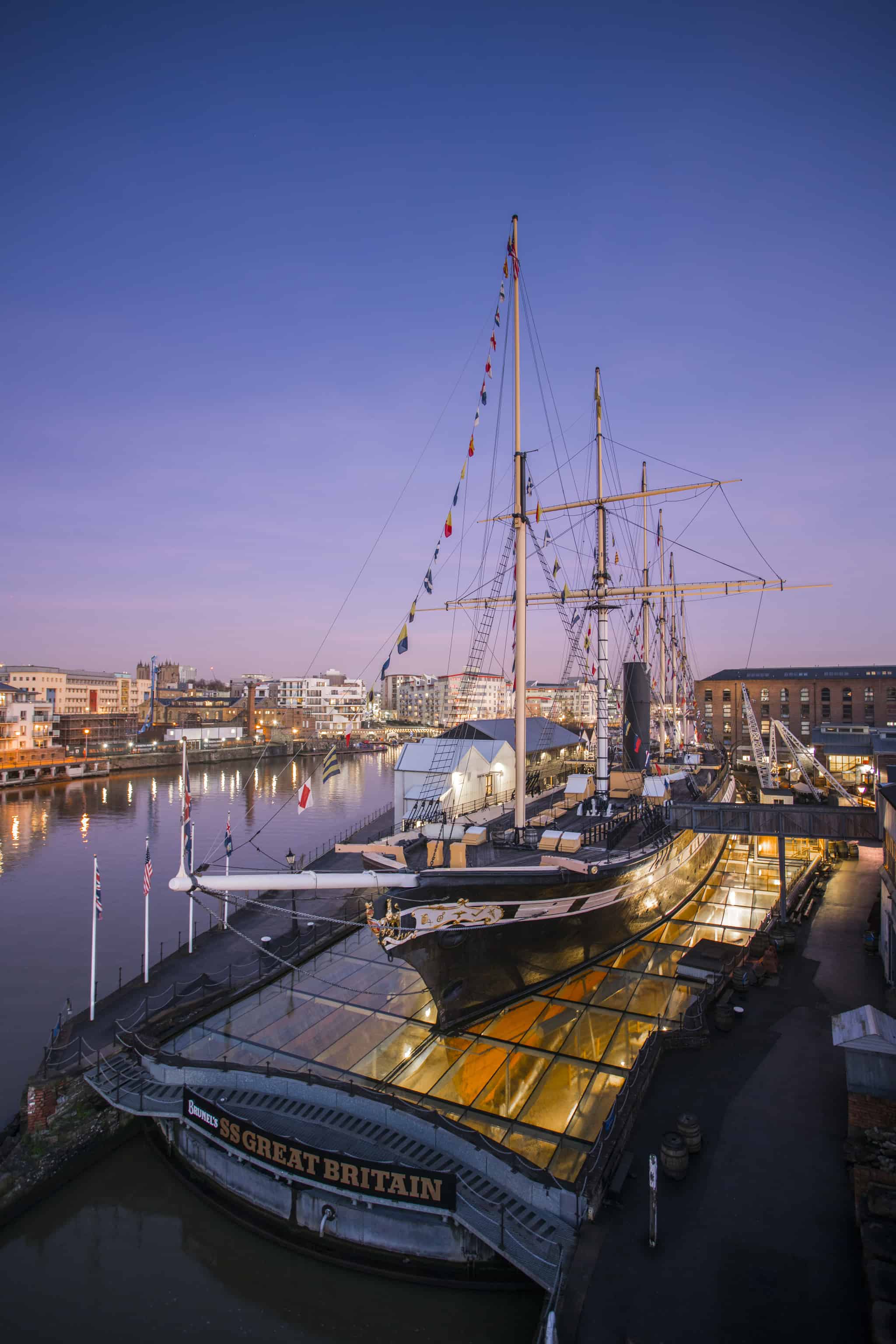The pss Great Eastern was designed as a vast passenger liner that could carry over 4000 passengers around the world. Her enormous size and complex construction meant that she failed to achieve success as a passenger liner. The challenges of constructing and launching a ship so large coincided with Brunel’s declining health and his death in 1859. After just a handful of voyages she was sold to a telegraph cable laying company in 1864 for a fraction of the price of what she had cost to build. However, it was in this new guise that the ship played a crucial role in advancing global communication.
An American, Cyrus West Field was behind the project to lay a telegraph across the Atlantic linking Europe and The United States. Field set up a company as early as 1856, and there were several failed attempts to install a cable, before a message was successfully sent and received between Ireland and
W. Field set up a new company with Daniel Gooch in 1864 and purchased the Great Eastern with the task of laying an improved cable. Both Field and Gooch were familiar to Brunel. Gooch had been appointed by him as Locomotive Superintendent of the Great Western Railway in 1837 and became a lifelong friend and supporter. Field was a contact of Brunel and a letter from Field is held at the Brunel Institute as part of the University of Bristol Brunel Collection. The letter dated November 18th 1858 was written just a year before Brunel died. Field, under the address of the ‘Atlantic Telegraph Company’ asked advice about the ‘rise and fall of the stern of steam ships in crossing the Atlantic’. Brunel was clearly interested in the task of laying telegraph cables and one of his sketchbooks shows drawings and calculations for a ‘cable vessel’ from around 1858. Little did he know that his planned luxury leviathan would do exactly that in a few years’ time.
The pss Great Eastern was an ideal choice for the task of laying the cable as it was the only vessel large enough to carry the cable in its entirety. Previous efforts in 1857-8 had required the loan of multiple warships were to complete the task. Contemporary journalist and author of ‘The Atlantic Telegraph’ W. H. Russell mentioned that ‘the increased weight and size of the Cable would have made the question of stowage a very embarrassing one had it not been for the existence of the Great Eastern steamship’.
The pss Great Eastern’s first attempt at laying a cable in 1865 resulted in it breaking and being lost to the ocean floor but a second attempt in June 1866 was at last successful. Additionally, a few weeks later the team were able to successfully track and join the broken cable from the previous year. Daniel Gooch’s memoir records this. ‘God only knows the sensation of such a moment. For 3 weeks we had day and night, been striving (almost, for the last week, against hope) to recover this cable, but now all our anxieties & labours were fully rewarded’. After retrieving this second cable, there were now two functioning telegraph cables connecting Europe with America, at a length of 1,686 nautical miles.
The success of the laying of the cable was internationally celebrated and commemorative souvenirs were produced, this including sections of the cable that were kept as mementos. A number of these are in the SS Great Britain Trust collection. These unusual objects can be viewed in the Brunel Institute and the Being Brunel Museum.



